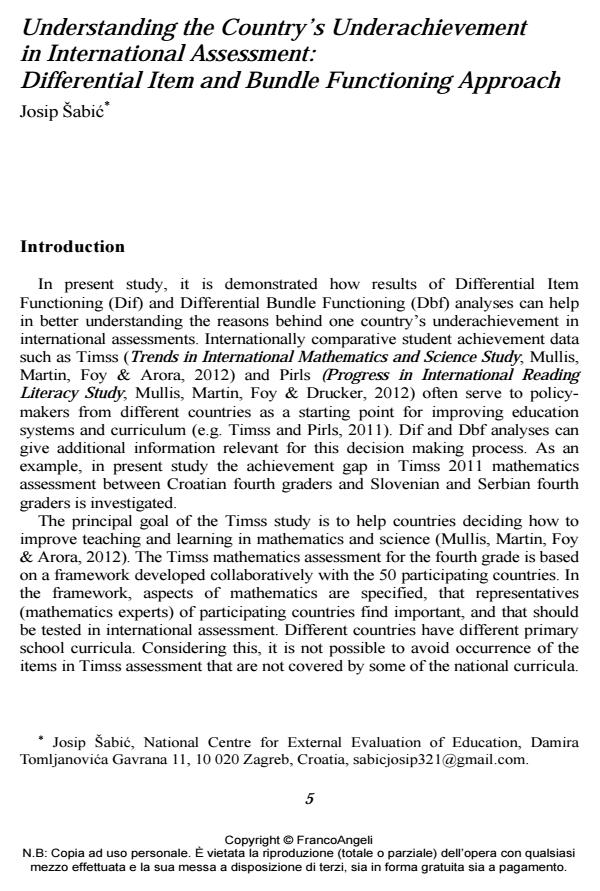Understanding the Country’s Underachievement in International Assessment: Differential Item and Bundle Functioning Approach
Journal title CADMO
Author/s Josip Sabic
Publishing Year 2016 Issue 2016/1
Language English Pages 15 P. 5-19 File size 450 KB
DOI 10.3280/CAD2016-001002
DOI is like a bar code for intellectual property: to have more infomation
click here
Below, you can see the article first page
If you want to buy this article in PDF format, you can do it, following the instructions to buy download credits

FrancoAngeli is member of Publishers International Linking Association, Inc (PILA), a not-for-profit association which run the CrossRef service enabling links to and from online scholarly content.
In educational context, Differential Item Functioning (Dif) and Differential Bundle Functioning (Dbf) are usually used in assessing item bias. In present study, it is demonstrated how results of Dif and Dbf analyses can help in better understanding the reasons behind one country’s underachievement in international assessments. In Timss 2011 mathematics assessment, Croatian fourth graders achieved a mean result that was below the international average, while Slovenian and Serbian students achieved mean results that were above the international average. The results of Dif and Dbf analyses indicate that large portion of items exhibiting differences in favour of Slovenian and Serbian students are related to topics that are not taught in Croatian schools during first four grades. The described methodology can be used in investigating other countries’ (under)achievement in international assessments.
Keywords: International differences, differential item functioning, differential bundle functioning, mathematics, Timss
Josip Sabic, Understanding the Country’s Underachievement in International Assessment: Differential Item and Bundle Functioning Approach in "CADMO" 1/2016, pp 5-19, DOI: 10.3280/CAD2016-001002